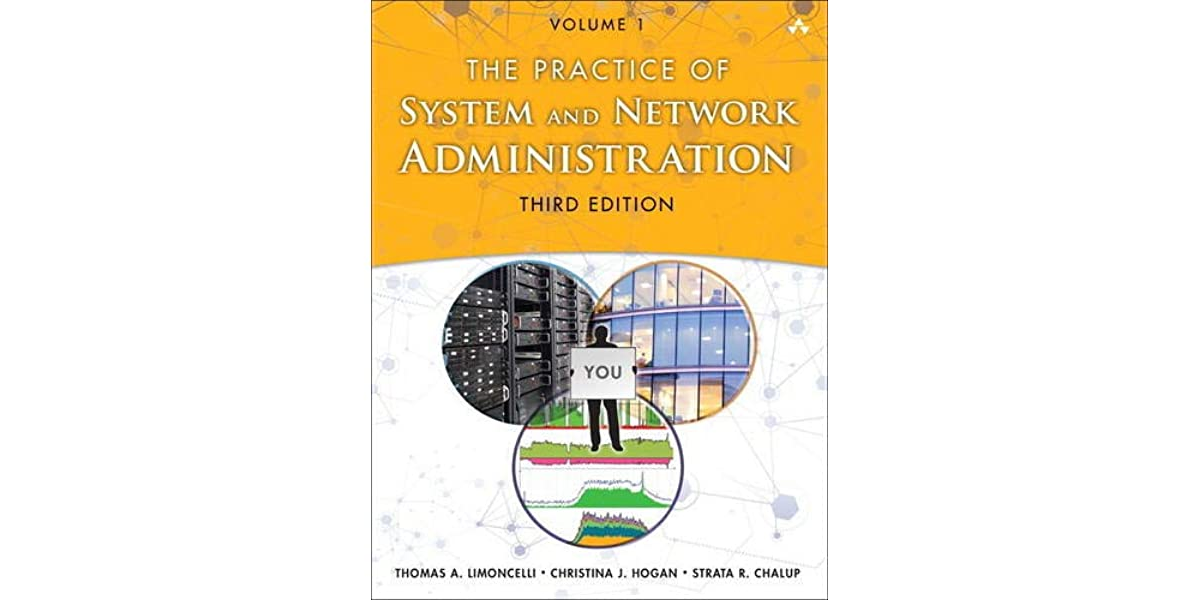1. Author’s purpose
The goal of the book is to teach System Administrators how to make their job right. This book is a combination of strategies on how to make a good job on three intertwined domains: System Administration, Network Administration, and IT support. The main theses of the authors is that doing a good job as a System Administrator is not a matter only of technical expertise but the “(…) bigger challenge is understanding why we do these things and how to organize our work. That’s were strategy comes in” (p.60)
In other words, this book is not a ‘hard-book’ but rather a ‘soft-book’. It’s not filled with technology recommendations but instead of acquired wisdom acquired throughout the careers of the authors.
The purpose of the book is to give the reader “(…) a framework –a way of thinking about system administration problems– rather than narrow how-to solutions to particular problems. Given a solid framework, you can solve problems every time they appear, regardless of the operating system (OS), brand of computer, or type of environment. This book is unique because it looks at system administration from this holistic point o view, whereas most other books for SAs focus on how to maintain one particular product. With experience, however, all SAs learn that the big-picture problems and solutions are largely independent of the platform.” (p. 60)
2. Main themes of the book
The authors divide the book into 10 parts.
Part I. Game-Changing Strategies: The most important advice is to control Work in Progress, and automate the biggest time-eaters (OS installation).
Part II. Workstation Fleet Management: Strategies for administering laptops and workstations in a company.
Part III. Servers: Strategies for administering the companies servers.
Part IV. Services: Strategies for administering the services that your team provides to the company.
Part V. Infrastructure: Strategies for administering your network and your datacenter (if you have one)
Part VI. Helpdesk and Support: Strategies to provide a good help desk and support.
Part VII. Change Processes: How to introduce changes in an organized way.
Part VIII. Service Recommendations: Recommendations for some specific services that System Administration teams usually provide.
Part IX. Management Practices: Organizational advice to improve the visibility of the team in a company.
Part X. Being more awesome. Strategies for measuring your team.
3. Commonalities with other books
This book has similarities to books that highlight the importance of management/organization/administration in System Administration/Operations. In this sense, it would be similar to the Phoenix Project by Gene Kim.
The book has close similarities with other books from the same authors. Like Time management for System Administrators by Thomas Limoncelly and “The Practice of Cloud System Administration, Designing and Operating Large Distributed Systems, Volume 2” (2015).
4. Uniqueness of the book
This book is unique because it teaches the reader how to do the System Administration Job right. System Administration is a very broad domain, it seems to be at least three jobs: Server Administration, Network Engineering, IT support; for these three domains, the authors spent considerable time sharing the wisdom they have acquired working on small, medium, and large companies.
The uniqueness of the book is precisely that it provides a vision on where a system administrator team should be going, and how to do it.
5. Was the author successful in proving his case?
Yes, for me the authors were successful in their goal of providing a framework to think System Administration Problem. In the end, I wouldn’t say they provided a single framework, but a set of strategies for dealing with System Administration Problems.
6. Compare the book with the best in the field
In my perspective, the best book of the System Administration Literature is the Unix and Linux System Administration Handbook (Fifth Edition) by Evi Nemeth, Garth Snyder, Trent R. Hein, Ben Whaley, and Dan Mackin. The Practice of System and Network Administration and the Unix and Linux Handbook represent two different approaches of the literature in System Administration.
On the one hand, this book is about making the System Administration job right, and hence is more ‘managerial’. In other words, it aims at how to organize a System Administrations team and how to organize the process that this team needs to do. For example, how to control the Work in Progress of the team, how to distribute the workload in the team, how to administer the companies servers, how to do and organize maintenance etc.
On the other hand, the Unix and Linux System Administration Handbook is more technical. Reading this book will give improve your technical skills. A book like this will teach you how to do the technical aspects of the System Administration job. For example, how to do logging, how to do CICD, how to configure a server etc.
These two types of books, cover similar topics but with completely different perspectives. And hence by reading both, you can get the best of both views.
7. Conclusion
The practice of System and Network Administration is one of the best books on System Administration. This book deals on how to do the System Administration Job right, and in this sense is more ‘managerial’ than technical. I recommend this book to System Administrators that want to continue in the management track. This book would be perfect for a System Administration that has recently become a Boss of a System Administration team because he will learn what needs to be done, and how to do it right.
On the other side, I don’t recommend this book for beginners on System Administration. Beginners can find it more useful to develop their technical expertise before learning the management part. I also don’t recommend this book for System Administration who want to improve their technical expertise or who want specific technical recommendations for their company.
